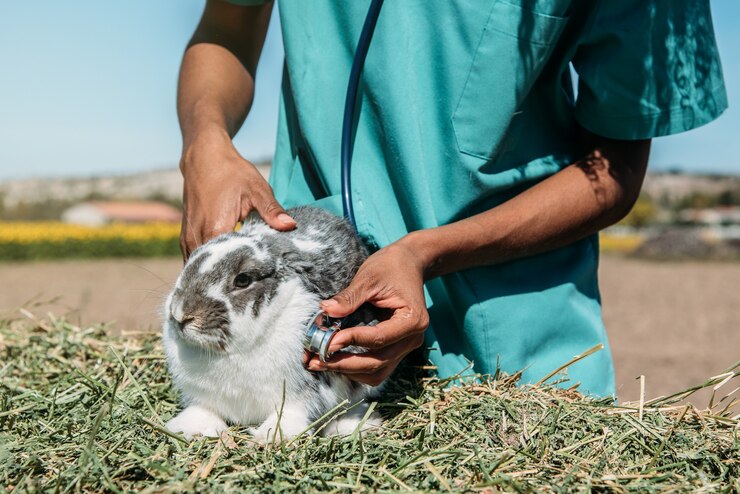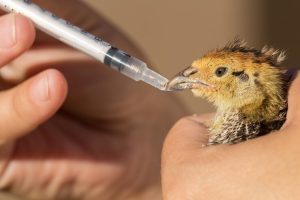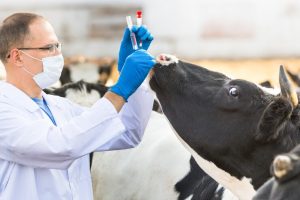Preventing Diseases Among Animals

For centuries, a plethora of diseases have posed serious threats to livestock, pets, and wildlife all over the world.
Aside from negatively impacting animal health & welfare, these diseases can also result in economic losses, public health implications, and ecological disruptions.
In recent months, the world has observed the rise (and spread) of numerous animal diseases that are affecting various species and presenting notable roadblocks for animal health management.
Fortunately, several prevention strategies can be implemented to prevent these diseases and, most importantly, keep our animals healthy and safe.
Let’s take a look at a few animal diseases that are currently causing a stir and discuss some prevention measures that can help mitigate their impacts.
Prevalent Animal Diseases of the 2020s
While all animal diseases warrant attention, some are causing particular concern. They include:
1. Avian Influenza
Source: Freepik
Avian influenza, commonly known as bird flu, is a viral infection that primarily affects bird species, including domestic poultry and wild birds. It spreads quickly and easily through direct contact with infected birds, their droppings, or contaminated environments.
The disease is caused by influenza Type A viruses, which are classified based on their pathogenicity into low pathogenic avian influenza (LPAI) and highly pathogenic avian influenza (HPAI). The most globally concerning HPAI strain currently is H5N1 can cause severe disease and high mortality rates in birds.
Birds infected with HPAI H5N1 often exhibit severe symptoms, including sudden death, lethargy, reduced egg production, and respiratory distress.
Visible signs may include swelling of the head, comb, and wattles, as well as nasal discharge, coughing, and diarrhea. Infected birds may also display neurological signs like incoordination and twisted necks.
Global outbreaks of this strain started in 2020 in wild birds and poultry. It first appeared in Russia in August 2020, before rapidly spreading to other parts of Europe by October.
By late 2021, the strain had spread to birds in the United States (U.S.) and Canada. It has since been identified in various wild bird species across all 50 states in the United States.
In February 2022, H5N1 began causing sporadic outbreaks in backyard and commercial poultry flocks in the U.S., leading to extreme illness and high mortality rates in infected chickens. As of May 2024, the CDC reported poultry outbreaks in 48 U.S. states.
While avian influenza primarily affects birds, strains like the H5N1 can potentially infect humans and other mammals. According to the CDC, H5N1 has affected over 80 dairy cows in the United States as of April 2024.
For humans, the risk remains relatively low, but it can still affect those in close contact with infected animals, such as poultry workers and veterinarians. Avian influenza virus infections in humans can cause mild respiratory issues or even serious conditions like encephalitis.
2. African Swine Fever (ASF)
Source: Freepik
This is a highly contagious viral disease that affects both domestic pigs and wild boars. The virus is known for its high mortality rate, as it often reaches 100% in affected populations.
ASF doesn’t pose a risk to human health or affect other animal species. However, it has catastrophic impacts on pig populations, as well as the swine industry.
The disease spreads through direct contact with infected animals, as well as indirectly through contaminated farm feed, equipment, and clothing. ASF can also be transmitted by certain tick species.
Since the virus can survive for long periods in pork products, improper disposal of contaminated pork can lead to new outbreaks.
ASF continues to be a significant concern globally. In Asia, Vietnam has reported a resurgence of the disease, with 171 outbreaks detected in 31 provinces by mid-April 2024. Notably, Bac Kan Province in northern Vietnam experienced severe outbreaks. This resulted in the death and culling of 1,182 pigs.
In Europe, ASF remains a persistent problem, as it has affected numerous countries. New cases have been reported in five additional European countries since 2023, including Montenegro, which confirmed its first occurrence in January 2024.
What’s more, in the Philippines, the Department of Agriculture confirmed new ASF cases in several towns on Mindoro island.
3. Rabbit Hemorrhagic Disease (RHD)
Source: Freepik
Rabbit Hemorrhagic Disease (RHD) is a highly contagious–and often fatal–disease that affects domestic and wild rabbits.
The disease is caused by the Rabbit Hemorrhagic Disease Virus (RHDV), with several strains including RHDV1 and the more recent RHDV2. Since it was first identified in China in 1984, RHD has since spread globally, impacting rabbit populations in Europe, Australia, and the Americas.
RHDV2, in particular, has been a concern in recent years due to its ability to infect a wider range of rabbit species, including both domestic rabbits and wild lagomorphs like hares and cottontails.
This strain was first detected in North America in 2018. Since then, it has caused widespread outbreaks across multiple states in the U.S.
As of 2024, the disease has been confirmed in states like California and New Mexico. These outbreaks have affected both domestic and wild rabbit populations.
RHDV2 spreads rapidly through direct contact with infected rabbits or exposure to contaminated materials such as fur, food, and water.
Symptoms of RHD include sudden death, often with blood-stained noses due to internal bleeding. Other signs can include fever, lethargy, and loss of appetite.
However, many rabbits may show no clinical signs before dying suddenly, which makes early detection of this disease difficult.
Apart from these three, some other common diseases that affect animals include:
- Chronic Wasting Disease (CWD): Affects deer and elk. Causes severe weight loss, behavioral changes, and eventually death.
- Canine Parvovirus: A highly contagious virus that causes severe gastrointestinal distress and can be fatal to dogs, especially puppies.
- Bluetongue: A virus transmitted by biting insects that affects sheep, causing fever, swelling, and in severe cases, death.
- Rabies: A deadly virus that affects the brain and spinal cord of mammals, including humans, transmitted through bites from infected animals.
- Foot-and-Mouth Disease: A highly contagious viral disease affecting cloven-hoofed animals like cattle, pigs, and sheep, causing fever and blister-like sores.
- Canine Distemper: A serious viral illness in dogs that affects the respiratory, gastrointestinal, and nervous systems.
- Bovine Tuberculosis: A bacterial disease in cattle that can spread to other animals and humans, causing chronic respiratory symptoms.
- Newcastle Disease: A contagious viral disease affecting birds that causes respiratory distress, neurological symptoms, and often death in poultry.
Disease Prevention Measures in Animal Health
Source: Freepik
If we want to ensure the health and well-being of animals, we need to employ measures that can help mitigate the spread of infectious diseases among them.
Not only will it protect individual animals, but it’ll also prevent the potential transmission of zoonotic diseases to us humans.
Let’s explore some of these measures:
1. Biosecurity
Biosecurity refers to a set of practices that aim to prevent the introduction and spread of diseases among animal populations.
It’s designed to protect both farmed and wild animals by minimizing the risk of infectious diseases entering, spreading, or leaving a facility or farm.
Effective biosecurity can help us significantly reduce the incidence of disease outbreaks. Here are some key biosecurity measures:
- Isolation and quarantine: New or returning animals should be isolated for a period before being introduced to the main population. This helps in identifying and managing any diseases they might carry.
- Controlled worker/visitor access: Limiting access to animal facilities to essential personnel only and ensuring they follow strict hygiene protocols (such as wearing protective clothing and washing hands) can minimize the risk of introducing pathogens. The same should be done for visitors–they should be informed about precautionary measures and provided with clean clothing and footwear.
- Disinfection: Disinfection can reduce disease spread from contaminated boots, buildings, yards, equipment, vehicles, and more. With regular cleaning and disinfection of facilities, equipment, and vehicles, we can eliminate pathogens. This process should include thorough cleaning to remove organic matter, followed by the application of appropriate disinfectants.
- Vermin control: It’s also good practice to keep animal facilities free from vermin such as rodents, birds, and insects, as they can carry and spread diseases.
- Feed and water management: Ensuring that feed and water sources are clean and uncontaminated helps prevent the introduction of pathogens through these essential resources.
2. Vaccination
Vaccines can stimulate the immune systems of animals to recognize and fight off specific pathogens. This is because they contain antigens that mimic disease-causing organisms without causing the disease itself.
When an animal is vaccinated, its immune system is trained to respond quickly and effectively if it encounters the actual pathogen later. In turn, this can reduce the severity of the disease or even entirely prevent it.
Vaccines are developed for both viral and bacterial infections; they offer protection against diseases that can be difficult or impossible to treat otherwise.
3. Education and training
This next measure equips individuals and communities alike with the knowledge and skills necessary to recognize, manage, and prevent the spread of animal diseases.
By targeting a diverse audience (including veterinarians, farmers, animal handlers, and the general public), educational programs and resources ensure that everyone involved in animal care understands the importance of disease prevention and control measures.
4. Surveillance
This also plays a crucial role in curbing common animal diseases by enabling early detection and prompt response to outbreaks.
It typically involves the continuous collection, analysis, and interpretation of data related to animal health, which is then promptly communicated to authorities who can take action.
A good surveillance system uses a mix of approaches like passive disease reporting (where farmers report sick animals) and active methods like regular surveys and inspections.
These systems can detect emerging diseases, monitor ongoing health issues, and provide data on the prevalence of various diseases across regions.
Conclusion
By working together and implementing these measures, we can create a healthier environment for our animals and ourselves!
With everyone playing their part, keeping animals safe and protected from these terrible diseases will seem like a walk in the park.




